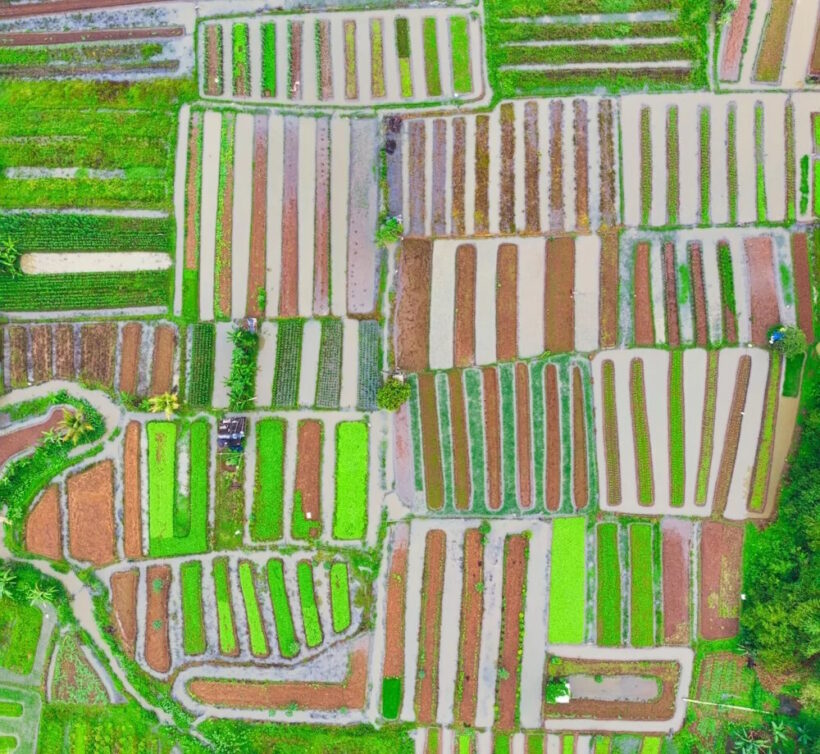The global agricultural sector is grappling with the first, but already devastating, effects of the climate crisis. Recent events affecting Italian agriculture represent a perfect as well as tragic example of this. Prolonged periods of drought followed by destructive floods, unprecedented hailstorms, and late and unpredictable frosts. Extreme weather events are beginning to occur with increasing frequency and violence, while politics, after miserably trying to deny or minimize what can now no longer be denied or minimized, stalls, makes promises, and allocates funds (few and poorly). The mediocre adaptation and mitigation solutions advanced so far by the Italian government and trade associations portend a disastrous fate for Italian farmers and ranchers. The economic interests of large agribusinesses are still an obstacle to the green revolution that this sector needs. Ultra-capitalist turncoats bar the way to measures, such as the reduction of nitrogen emissions, and turn new practices, such as carbon farming, into pure instruments of profit.
By Marco Pisano
What is carbon farming?
Of the effective actions, useful for reducing the environmental impact of agriculture, there is little talk. [There is talk] in universities, in some rarely dedicated conferences or in isolated places, [in] companies that create excellent food and environmental conditions, capable of creating quality products, using methods that can not only protect ecosystems but also regenerate them. Regenerative agriculture, which seems to be catching on more and more in Italy as well, is part of the list of green farming practices that are in some ways “miraculous.” Preserving and enriching soil fertility while restoring the biological balance of soils represents a challenge that is not easy to face but at the same time an important economic and environmental opportunity for the entire agricultural sector. In fact, soil in excellent condition can be an additional weapon in the fight against climate change, as it can sequester large amounts of CO2 from the atmosphere.
“Increasing the organic carbon content of agricultural soils (SOC) (Soil organic carbon) is highly desirable and can contribute to climate change mitigation and adaptation. The carbon farming practices by which such increases can be achieved are well known and are likely to bring multiple co-benefits such as improved yield stability and biodiversity conservation.” Once again, science underscores the importance of radical action, of necessary changes helpful in saving what can be saved. “Carbon farming,” which recently entered the carbon credit market through the EU Commission’s Sustainable Carbon Cycles Communication, includes agricultural practices capable of sequestering carbon dioxide from the atmosphere by storing it in soils. The “Technical Guidance Manual” (“Manuale di orientamento tecnico”) lists possible practices that can be implemented in this regard. Four areas can be worked on through different mitigation actions:
- -Land use: Conversion of arable land to grassland to sequester organic carbon in the soil, new agroforestry, conversion/restoration of wetlands/peatlands, forest planting, prevention of deforestation and of removal of trees from farmland, management of woodlands, hedgerows, wooded buffer strips and trees on existing farmland;
- -Cropland management: Improved crop rotation, reduced or minimal tillage (regenerative agriculture), permanence of crop residues on the soil surface, discontinuation of the practice of burning agricultural residues and vegetation, use of protective/intercalary crops;
- -Livestock management: Livestock health management, use of sexed seed for breeding replacement dairy herds, selection of breeds with lower methane emission impact, use of feed additives in ruminant diets, optimization of livestock feeding strategies;
- -Nutrient and soil management: Soil and nutrient management plans, improving nitrogen efficiency, biological nitrogen fixation in crop rotations and grass mixtures, improving energy efficiency in agricultural enterprises.
According to the European Commission, “Pilot initiatives should be developed at the local or regional level in order to gather experiences to enhance carbon farming. This will improve aspects of design, particularly certification of carbon removal, and expand knowledge and understanding of the potential benefits for farmers.” There are already two EU co-funded projects related to carbon farming: The Life Carbon Farming program and the INTERREG Carbon Farming project both aim to mitigate climate change by improving the condition of agricultural soils and developing and adopting new incentives useful for carbon sequestration.
Gaining maximum benefits from agriculture while protecting the environment is therefore possible. In addition to rainwater harvesting reservoirs (useful but not decisive), maintenance of riverbeds (necessary but not decisive) and agricultural insurance, Italian farmers and ranchers should be encouraged to adopt sustainable production practices and, before that, to acquire information on such techniques. According to the study, “Carbon Farming: Prospects and Challenges,” in a context where growing human needs need to be met with production methods that mitigate climate change, “Carbon farming offers an all-encompassing and sustainable land use management method that is beneficial to both environment and society.”
All this still seems to be utopia in a country that has twisted the meaning of food sovereignty, downgrading it to a concept useful for sovereignist propaganda. The questionable public utterances of Minister Francesco Lollobrigida, fully supported by the major trade associations, complete the sad picture of an already complicated situation. Empty talk about Made in Italy and the continued defense of the interests of Italian farmers will soon clash with the sad reality. If action is not taken now and effectively, very soon there will be no Made in Italy to enhance nor any agricultural economic interest to defend.










